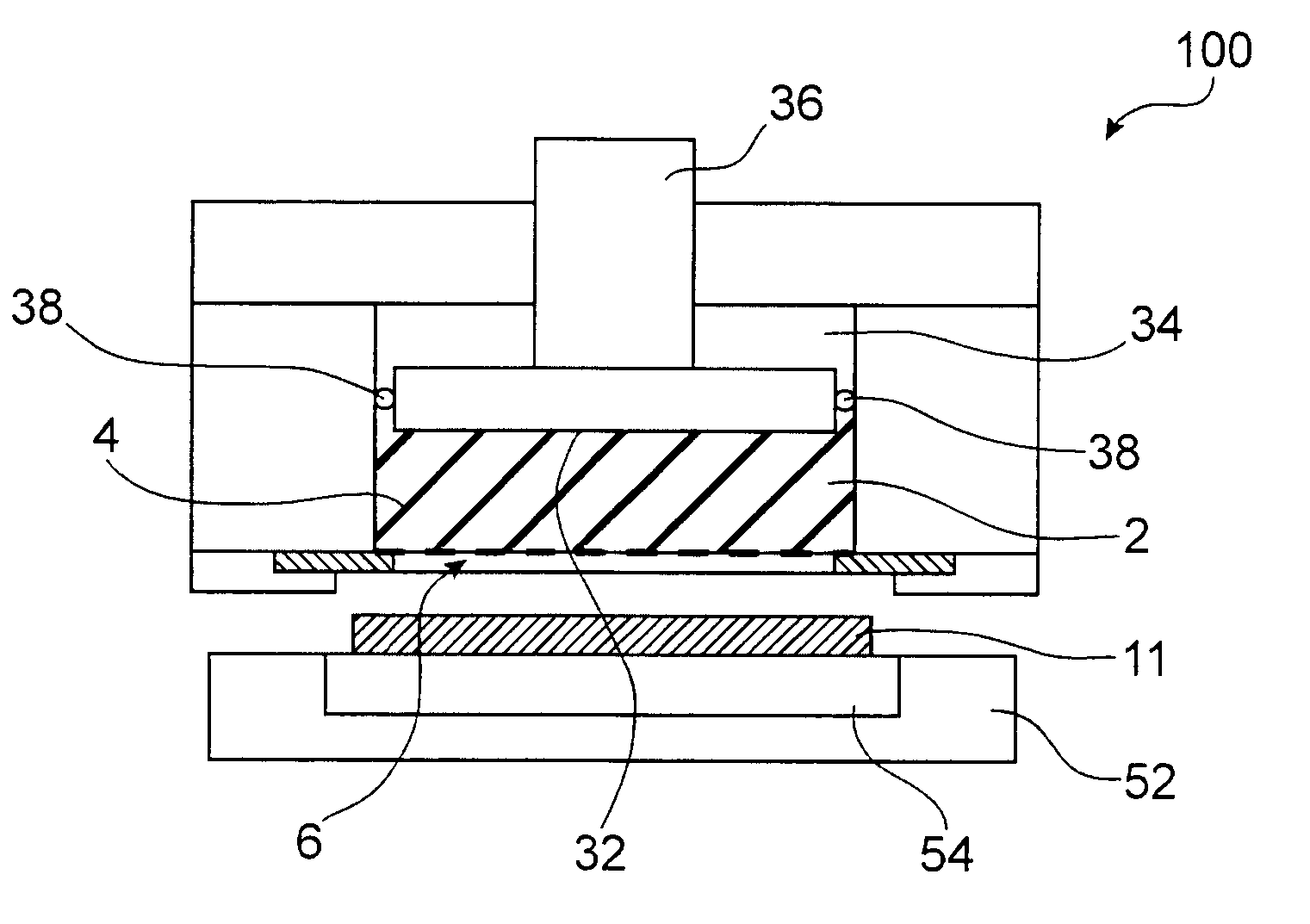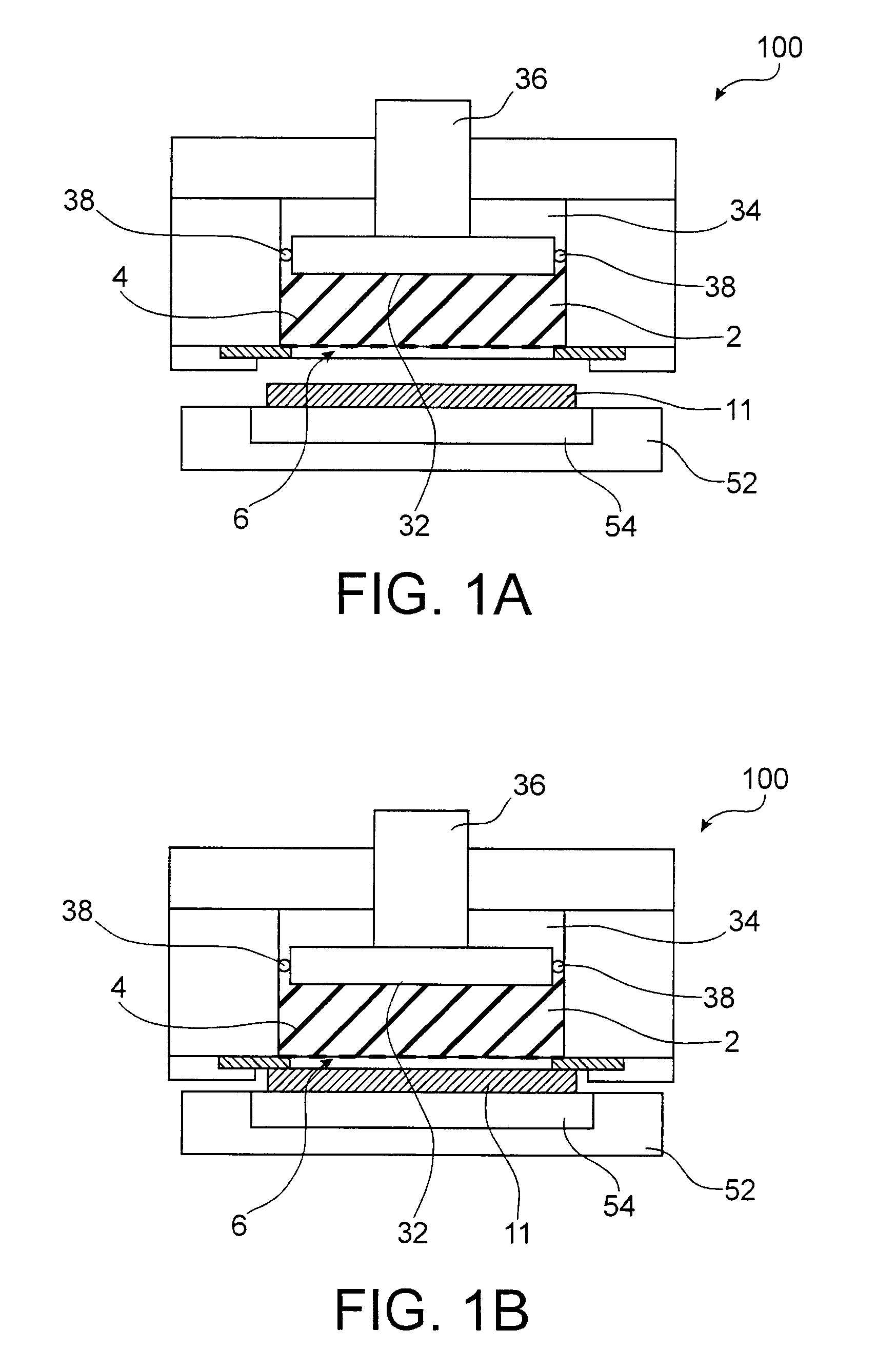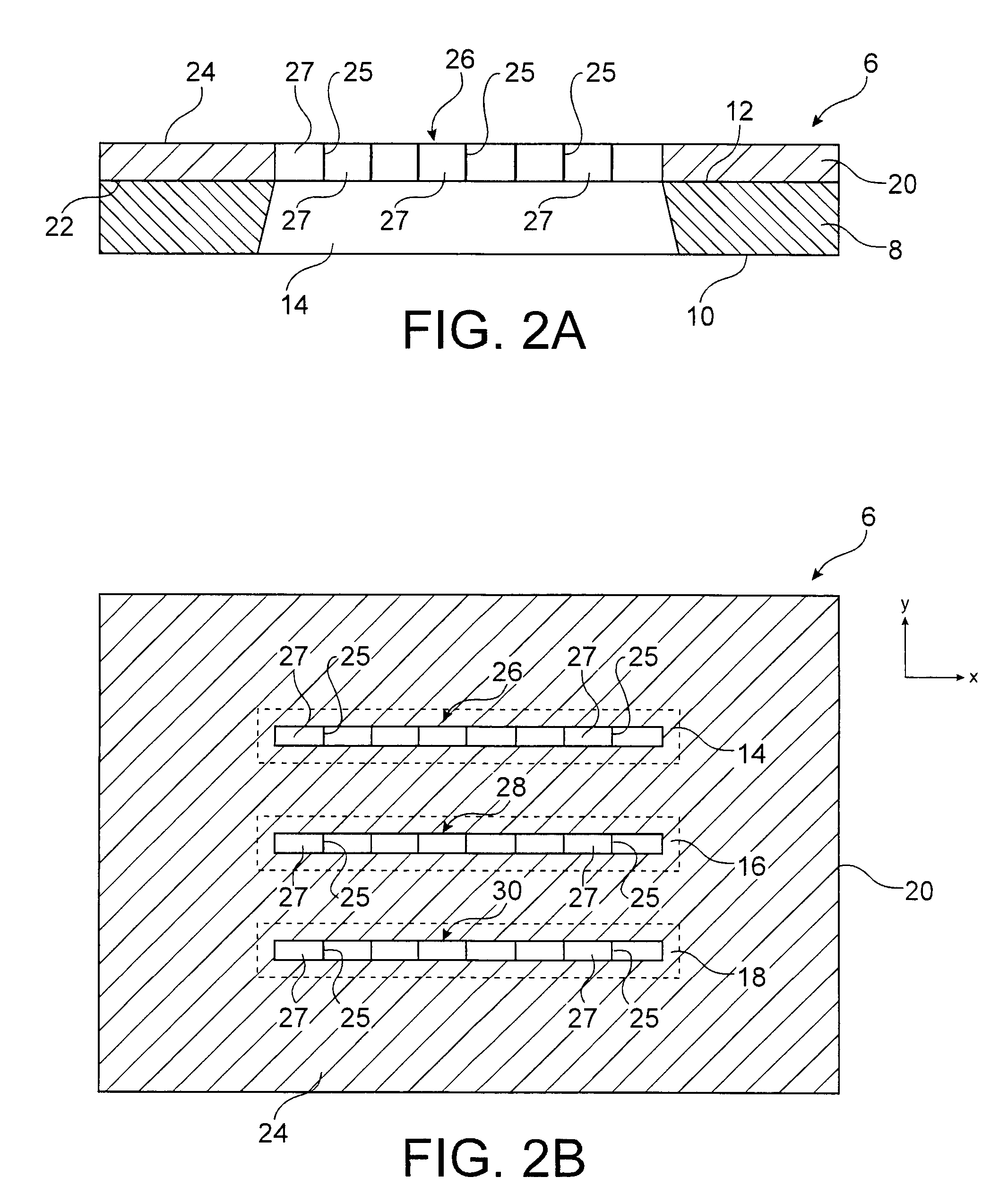Metallizing device and method
a technology of metal contact and metallization paste, which is applied in the direction of photovoltaic energy generation, ion implantation coating, coating, etc., can solve the problems of evaporation of solvents found in metallization paste, high resistivity of materials, and limited height/width form factor of metallization, so as to reduce the proportion of binders, increase the viscosity, and increase the viscosity
- Summary
- Abstract
- Description
- Claims
- Application Information
AI Technical Summary
Benefits of technology
Problems solved by technology
Method used
Image
Examples
first embodiment
[0050]First of all, reference will be made to FIG. 1A which illustrates a metallization device 100 according to a
[0051]The metallization device 100 includes a closed enclosure 2 of variable volume intended to contain the metallization paste 4. In this first embodiment, a semiconductor device 11 intended to be metallized by the metallization device 100 is photovoltaic cell.
[0052]A printing screen 6 forms one of the walls of the enclosure 2. This printing screen 6 may for example be a screen of the stencil or web type. In this first embodiment, the printing screen 6 is a dual layer screen as described later on in connection with FIGS. 2A and 2B.
[0053]In the metallization device 100, the closed enclosure 2 is made in such a way that the application of a force or pressure on a mobile sealed wall 32 of the enclosure 2 opposite to the wall formed by the printed screen 6 causes a reduction in the volume of the enclosure 2. With this volume reduction of the enclosure 2 it is possible to cau...
second embodiment
[0077]FIG. 4 illustrates a metallization device 400 according to a This device 400 includes an upper portion formed by a plate 46, bound to a support 52 intended to receive the semiconductor device 11.
[0078]The metallization device 400 includes a lower portion including a solid reservoir formed by the sidewalls 50 and a component 58 forming a bottom wall, the sidewalls 50 being translationally mobile relatively to the component 58. A closed enclosure 2 formed by a sealed membrane 40 is positioned in the solid reservoir. A plate 60 supports the components of the lower portion of the metallization device 400. Regulation means 56, such as a plate based on a heat conducting material including an integrated piping network allowing circulation of a temperature-regulated fluid, allows the temperature to be controlled inside the enclosure 2 and to be regulated in order to, for example, temporarily decrease the viscosity of the paste so as to facilitate injection by raising the paste to a t...
PUM
| Property | Measurement | Unit |
|---|---|---|
| viscosity | aaaaa | aaaaa |
| temperature | aaaaa | aaaaa |
| viscosity | aaaaa | aaaaa |
Abstract
Description
Claims
Application Information
 Login to View More
Login to View More - R&D
- Intellectual Property
- Life Sciences
- Materials
- Tech Scout
- Unparalleled Data Quality
- Higher Quality Content
- 60% Fewer Hallucinations
Browse by: Latest US Patents, China's latest patents, Technical Efficacy Thesaurus, Application Domain, Technology Topic, Popular Technical Reports.
© 2025 PatSnap. All rights reserved.Legal|Privacy policy|Modern Slavery Act Transparency Statement|Sitemap|About US| Contact US: help@patsnap.com



